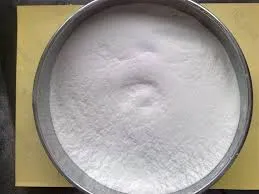
کانونی یەکەم . 19, 2024 16:17 Back to list
HPMC Viscosity Classification and Application Insights for Optimal Performance
Understanding HPMC Viscosity Table A Comprehensive Overview
Hydroxypropyl Methylcellulose (HPMC) is an essential polymer used extensively in various industries, particularly in pharmaceuticals, food, and construction. The viscosity of HPMC solutions plays a crucial role in determining their applications and effectiveness. A thorough understanding of the HPMC viscosity table can greatly assist formulators and manufacturers in selecting the appropriate grade for their specific needs.
What is HPMC?
HPMC is a cellulose derivative, which is modified to enhance its properties, making it soluble in water while maintaining its structural integrity. It can form gels, thicken solutions, and serve as a binding agent. One of the core attributes of HPMC is its viscosity, which refers to the resistance of a fluid to flow. In the case of HPMC, viscosity is influenced by factors such as concentration, molecular weight, and degree of substitution.
Importance of Viscosity
Viscosity is a critical parameter that affects how a product behaves in different scenarios. For instance, in pharmaceuticals, the viscosity of HPMC can influence drug delivery, stability, and release rates. In the food industry, viscosity impacts texture, mouthfeel, and stability of formulations. In construction, it contributes to the workability and bonding properties of mortar and concrete mixtures.
HPMC Viscosity Table Overview
The HPMC viscosity table typically outlines various grades of HPMC and their corresponding viscosity measurements. These measurements are usually expressed in centipoise (cP) or mPa·s, which are units that quantify the thickness or flow resistance of the liquid. The table includes several grades, each suitable for different applications due to its unique viscosity characteristics.
For instance, a low-viscosity grade may be optimal for applications requiring a quick and easy-to-spread solution, such as in certain food products or pharmaceuticals. Conversely, high-viscosity grades are preferable in applications where thicker consistency is necessary, such as in adhesives or coatings.
hpmc viscosity table

Factors Influencing Viscosity
1. Molecular Weight Generally, the higher the molecular weight of the HPMC, the higher the viscosity it exhibits. This relationship is linear; as molecular weight increases, the entanglement of polymer chains contributes to an increase in resistance to flow.
2. Concentration The viscosity of an HPMC solution is also concentration-dependent. Higher concentrations lead to higher viscosity due to increased interactions among polymer chains. Therefore, manufacturers must select the concentration carefully to achieve desired viscosity levels.
3. Temperature Viscosity is affected by temperature as well. As the temperature increases, viscosity tends to decrease, making the solution less resistant to flow. This phenomenon is significant in processes that involve heat, such as cooking or industrial mixing.
Choosing the Right HPMC Grade
When selecting HPMC based on viscosity, it is crucial for formulators to consider the end-use application thoroughly. A formulation designed for drug delivery may require a specific viscosity to ensure proper release rates and bioavailability. In contrast, a food product may need a different viscosity to achieve the desired texture and stability.
Formulators often rely on viscosity tables to choose the right grade. By matching the viscosity requirements of their formulations with the data from the viscosity table, they can make informed decisions that enhance the performance and quality of their products.
Conclusion
The HPMC viscosity table is an invaluable resource for anyone involved in the formulation and application of HPMC in various industries. By understanding the relationship between viscosity, concentration, and molecular weight, manufacturers can optimize their products for better performance. As industries continue to evolve, the significance of precise viscosity control in product development remains paramount. Thus, a deeper understanding of HPMC viscosity and its implications will empower formulators to create innovative solutions that cater to the diverse demands of the market.
-
Versatile Hpmc Uses in Different Industries
NewsJun.19,2025
-
Redispersible Powder's Role in Enhancing Durability of Construction Products
NewsJun.19,2025
-
Hydroxyethyl Cellulose Applications Driving Green Industrial Processes
NewsJun.19,2025
-
Exploring Different Redispersible Polymer Powder
NewsJun.19,2025
-
Choosing the Right Mortar Bonding Agent
NewsJun.19,2025
-
Applications and Significance of China Hpmc in Modern Industries
NewsJun.19,2025







